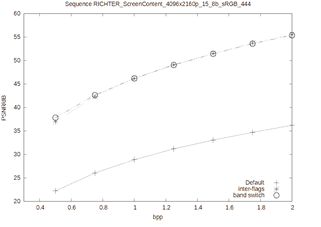JPEG XS for RAW Bayer compression
The second edition added RAW Bayer data compression for CFA (Color Filter Array) image sensors to enable compression in digital cameras with highest quality. Image sensor data have specific characteristics in black level and noise behavior. While considering these characteristics an optimized coding with highest performance can be achieved. An improvement in quality up to* 5dB could be demonstrated in comparison to data agnostic compression. Further features in the second edition are profiles for 420 image compression and mathematically lossless compression of image data.
Compression efficiency for screen and mixed signal content
A third edition of the standard has recently been launched. The focus is to achieve better compression efficiency for screen and mixed signal content. The build-in wavelet transform in the JPEG XS coding algorithm allows for a good energy compaction in natural images, resulting in good performance for this type of content. However, this alone is not ideal for screen content. Because of this, data from the previous frame in a sequence are now allowed to be used to predict the actual frame. This method does not increase the latency, but requires slightly more memory resources to store previous data in a buffer. We were able to improve the PSNR (Power Signal Noise Ratio) up to 10 dB for screen content. The third edition is still under development, but its publication is scheduled for begin of 2023.
Fraunhofer IIS offers JPEG XS SDKs for x86 CPUs, ARM CPUs and NVidia GPUs.

